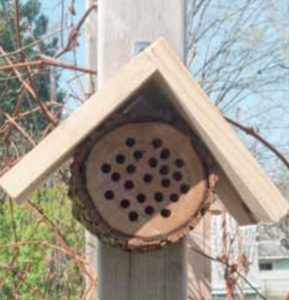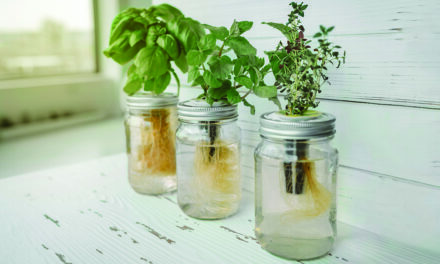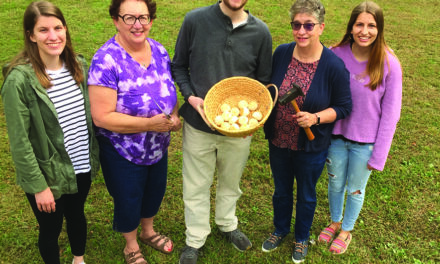The ABC’s of ‘A bee, see!’
There’s been quite a bit of buzz over the past few years about the importance of protecting bees.
Even primary schools are stressing the vital role of these pollinators as my children have transitioned from yelling out an alarmed “Mom! A bee!” to “Awe, Mom … a bee!”
While the European honeybee gets most of the credit for pollination, the number of managed hives is half of what it was in the 1950s and continues to decline due to honeybee pests and diseases.
Enter our helpful native bees that contribute significantly to crop pollination and, on farms with suitable habitats for the bees, may provide all of the pollination needed for some crops.
Unfortunately, highly managed farms do not make happy bee homes. Native bees prefer untilled ground, tree snags and cavities, shrubs with pithy stems and a minimally pesticide controlled area. Generally a solitary species, unlike the comb-filled hives of the social honeybee, the native bee female provisions the nest alone.
Most solitary bees are only active for just a few weeks of the year and most only have one generation, which leaves not a lot of time for them to fly around to pollinate other crops and plants.
Knowing the habitat desires of the 4,000 native bees is important so we can understand how to provide them homes in our own yards thus helping the species thrive.
About 30 percent are solitary wood bees that like to build their nests inside hollow tunnels like the soft centers of twigs, rotting logs and stumps and even holes made by the wood-boring carpenter bee.
Most of our native bees — about 70 percent — are solitary groundnesting bees that excavate their nests underground.
These bees must have direct access to soil that is not in danger of flooding. The rest of the bees, the social bumblebees, bring up the rest of the species. They construct their nests in small cavities of old rodent burrows, beneath fallen plant matter and even in vacant bird nests.
The queen starts the new nest and her workers, sometimes hundreds of them, pollinate the nearby owers and crops.
The USDA National Agroforestry Center provides these tips to help homeowners provide optimal habitat choices for our native bees:
• Retain dead or dying trees and branches whenever safe and practical;
• Protect sloped or well-drained ground sites where plants are sparse and direct access to soil is available;
• Leave some areas of the ground in your yard or garden untilled and minimize weed control; and
• Protect grassy thickets, or other areas of dense, low cover from mowing or other disturbance.
Want to take it a step further? Make a bee-nesting block.

To make a nesting block for native bee habitat, drill holes into blocks of wood and mount them in a horizontal location that receives morning sun, and has protection from rain and extreme temperatures.
(Photo courtesy Pinterest)
Simply drill holes of varying sizes to attract a variety of bees into blocks of wood and mount them in a horizontal location that receives morning sun, and has some protection from rain and extreme temperatures. A sloped top will help with that. Many websites have detailed directions on how to make these.
Check out http://extension. umd.edu/hgic/insects/pollinators- and-natural-enemies ; https://xerces. org/ ; and http://www.pollinator.org/.
The Xerces Society for Invertebrate Conservation has ideas for other nesting homes you can make that will attract tunnel-nesting bees.
Stem bundles can be constructed out of bundles of reed, teasel, cup plant or bamboo. Cut the stem near the ridge, or node, to create a handful of tubes with one open end. Tie the tubes together into a bundle and make sure that the closed ends are all at the same end of the bundle.
To make it a little easier, instead of bundling the stems tightly pack them into a container like a tin can, plastic bucket, a short section of PVC pipe or a paper milk carton. Place this habitat in a sheltered location with the stems horizontal to the ground.
Providing these simple structures for native bees will further help them continue the lifecycle of flowering plants and crops.





